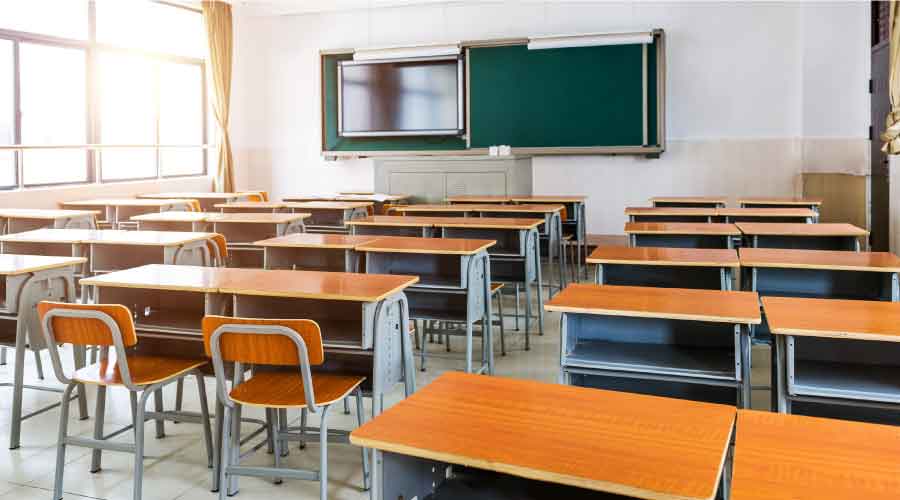
3 Ways Facility Managers can Improve IAQ for Students
As students return to classrooms, schools seek ways to improve ventilation to everyone healthy. September 6, 2022
By Dr. Tyler Orehek, contributing writer
As students around the country go back to school, indoor air quality (IAQ), a critical component of keeping students healthy and safe continues to be put on the back burner. Despite the $189 billion that Congress allocated to address IAQ in elementary and high schools, many schools remain indecisive on which technologies to implement.
Improving IAQ is one of the best ways to ensure that students and staff remain healthy. Yet, schools themselves present unique challenges. Typical school buildings contain four times as many occupants as office buildings of the same size, and children are often in close proximity to one another. Many have a large number of heating and cooling ventilation systems, which require significant attention from facility managers. Also, it’s not uncommon for schools to use portable classrooms or buildings that weren’t originally intended for the unique needs of schools, which can mean poor air flow and ventilation.
In addition to protecting students and staff against the COVID-19 pandemic, the short-term risks of poor IAQ include dizziness, fatigue, confusion, headaches, nausea, and irritation of the eyes and throat. Additionally, many people experience difficulty breathing, asthma symptoms and allergic reactions as a result. Needless to say, with many schools back in session, the time to start optimizing IAQ is now. So what can facility managers do to get a jump start on this?
Source control
One of the most effective measures that facility and/or plant managers can take to combat IAQ concerns is through Source Control. In other words, the first step should be removing any potential sources of compromised air quality that may be lurking on school grounds.
Eliminating individual sources of pollution and reducing any emissions associated with them is a considerable step in decreasing air quality concerns. Additionally, this is also one of the more cost-effective approaches to improving IAQ. For example, safely removing old asbestos within a building, or wet and compromised sheetrock which can breed mold instantly decreases pollutants and their harmful effects. This also makes it easier to filter out the remaining pollutants and ensure that purified air is being established.
Commercial-grade air purifiers
Another key component in combating IAQ concerns is utilizing commercial-grade, stand-alone air purifiers.
Viruses are extremely small, on the order of 0.1 microns in diameter, and unfortunately, a building's HVAC filters can only do so much. HVAC filters are designed to be porous enough to allow for adequate air flow in order to cool or heat a building. Therefore, they’re not discerning enough to filter out ultra-fine particles. That’s why air purifiers within indoor spaces are one of the most effective approaches for addressing IAQ concerns.
Aside from being able to achieve continuous, purified air changes hourly, the internal filters of medical-grade systems are infinitely more discriminating compared to HVAC filtration. The effectiveness of an air purifier, and how well it can capture airborne contaminants, whether it be ultra-fine particulates, volatile organic compounds (VOCs), or microbial contaminants such as viral pathogens and mold, is directly tied to the quality and integrity of the type of filters used.
Additionally, schools need to consider air purifiers that work at a faster rate, meaning that a higher air change per hour (ACH) occurs and that all of the air in the room is effectively drawn into the system and purified of pollutants.
Improved ventilation
Lastly, increasing a building’s ventilation will unquestionably help remove, or at the very least, dilute the concentration of airborne contaminants in a space. There are a number of simple and easy fixes that can have a profound impact on air quality. For example, placing a fan near an open window can have a positive effect on air flow and IAQ. Letting in as much outdoor air as possible, when safe to do so, is one of the most effective ways to increase air flow.
Additionally, HVAC system settings can be updated to maximize ventilation. For example, systems can be set to bring in as much outdoor air as the system can handle safely, including for two hours before schools are in session. Manually setting ventilation controls from “auto” to “on” will ensure fans operate continuously, irrespective of whether heating or cooling is needed.
Facility managers should note that as it relates to COVID-19, it is often the cumulative viral-load that an individual is exposed to which plays the biggest role in determining whether someone will contract the virus. Therefore, by decreasing and limiting students’ exposure through increased ventilation, their risk can be reduced significantly.
The health threat of poor IAQ, from the risk of contracting COVID-19 to asthma and allergy symptoms, underscores the need for schools to take action. Facility managers must eliminate individual sources of poor IAQ, incorporate stand-alone air purifiers, and improve ventilation through a number of ways to help keep students and staff safe throughout the school year.
Dr. Tyler Orehek has been an IAQ specialist since 2007 and a Council-Certified Indoor Environmental Consultant (CIEC), board-awarded by the American Council for Accredited Certification (ACAC).
Next
Read next on FacilitiesNet












